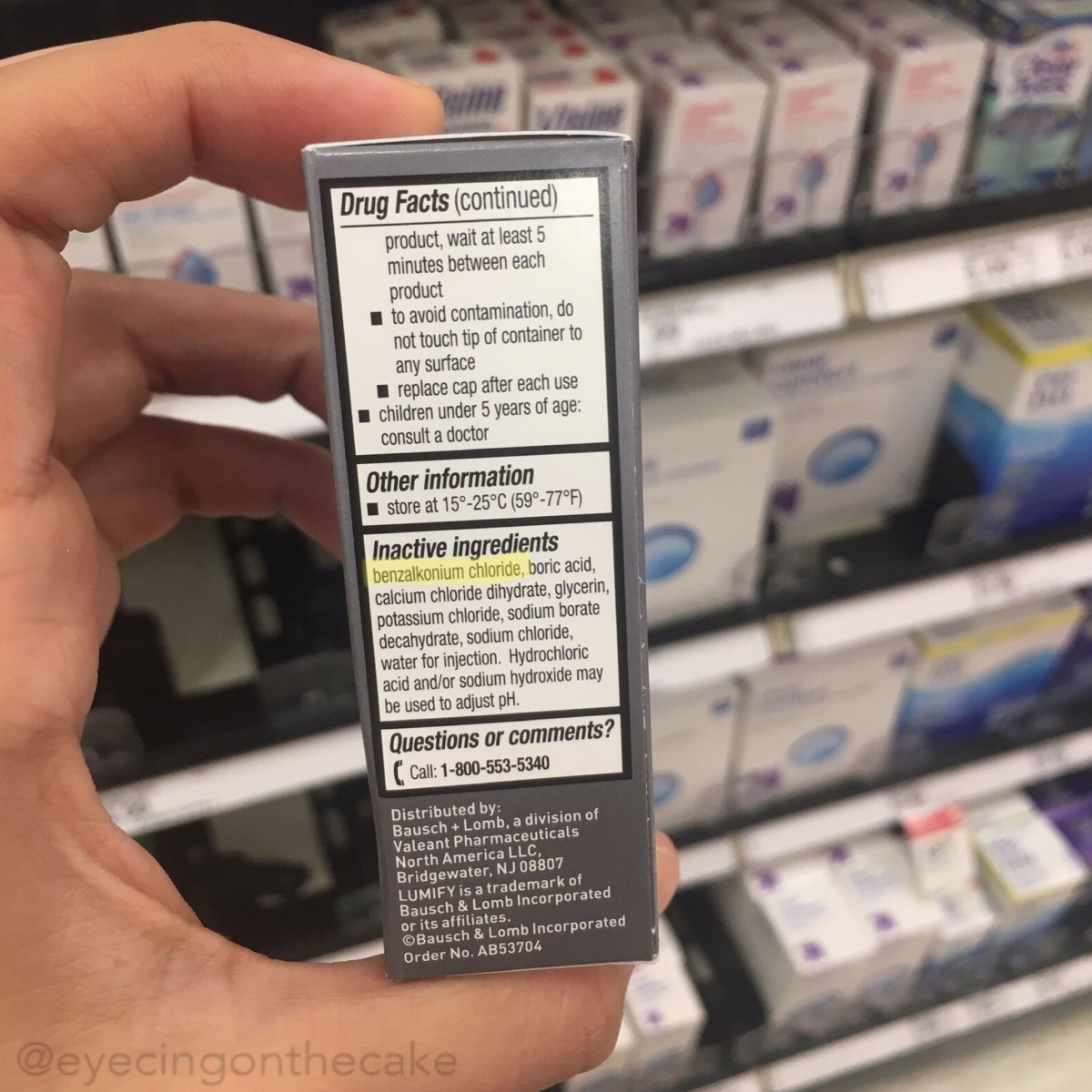Do you use eye drops several times a day? Did you know that even over-the-counter eye drops can be harmful if used too often? Nearly all multi-dose eye drop bottles contain preservatives (such as benzalkonium chloride), and those preservatives come with potential problems.

What is benzalkonium chloride?
Benzalkonium chloride (aka BAK or BAC), a quaternary ammonium, is the preservative used most commonly in prescription and over-the-counter eye drops.
Is BAK a bad thing?
BAK is known to have toxic effects on the tissue of the eye. It has been shown in studies to cause tear film instability, loss of goblet cells, conjunctival squamous metaplasia and apoptosis, disruption of the corneal epithelium, and damage to deeper ocular tissues (1). Though there is a very low concentration of BAK in most eye drops, some individuals have a particular sensitivity to BAK, which can lead to eye irritation, discomfort, and dryness. Long-term accumulation of BAK can be harmful to the front surface of the eye, particularly in those who have dry eye disease. A study comparing preserved vs preservative-free glaucoma eye drops found that the drops preserved with BAK induced more ocular discomfort and tear film instability, and more severe meibomian gland loss (2).
How can we get around BAK?
BAK is an ingredient in many useful eye medications. If you are on multiple eye drops, or you are using an eye drop multiple times a day (especially drops to “get the red out” or to relieve itchy allergy eyes), talk to your eye doctor about other options (ie: preservative free drops or an alternate therapy that can be dosed less frequently).
| CLIFFSNOTES: BAK is a preservative used in many eye drops. It can cause damage to the eye, and some people have a sensitivity to this preservative. Make sure you check in with your eye doctor regarding all eye medications you use (including over-the-counter drops) and how often you use them. |
